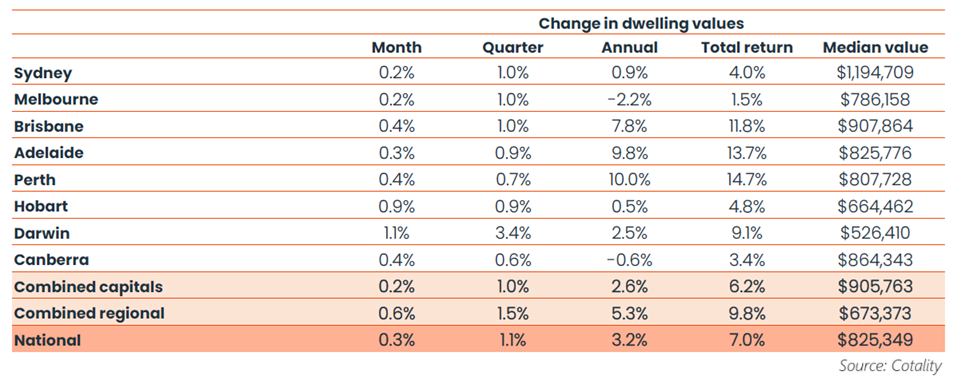Growth eases as buyer sentiment weakens amid election and global uncertainty

Australia’s residential property market recorded its third consecutive month of price growth in April, though the pace of gains showed signs of easing, according to the latest data from property analytics firm Cotality.
The national Home Value Index rose 0.3% last month, bringing the median dwelling value to a new peak and adding around $2,720 to the average home price.
All capital cities posted increases, led by Darwin with a 1.1% rise. Sydney and Melbourne saw more modest gains of 0.2%. Despite the broad-based uplift, the monthly growth rate slowed from March’s 0.4%, with weakening consumer sentiment and softer auction results contributing to the deceleration.
“The rate cut in February supported an upwards inflection in housing market conditions, but the positive influence from lower rates seems to be losing some potency,” said Tim Lawless (pictured above), research director at Cotality. “At the same time, household confidence slipped in April, with the US’s ‘Liberation Day’ tariff announcements and the upcoming federal election causing uncertainty. It is likely this may be causing some buyers and sellers to delay their decisions.”
Lawless noted that while home values continued to rise, the uncertainty was more apparent in sales and listing activity. He attributed the lull in part to the timing of public holidays, with many Australians taking extended leave between Easter and ANZAC Day.
Auction activity reflected this pullback. In the week ending April 20, only 644 auctions were held across the capital cities — the lowest number for an Easter week since 2019, when the market was similarly subdued ahead of the federal election. New listings also dipped, reaching 19,650 over the four weeks to April 27, the lowest for this time of year since 2019.
“With further rate cuts likely as soon as May 20th, and a level of certainty returning to the market after the federal election on May 3rd, we expect a further modest rise in values for 2025,” Lawless said.
Not all markets have rebounded to their previous peaks. Among the capitals, only the mid-sized cities have reached record-high values. Sydney remains 1.1% below its September 2024 peak, Melbourne is down 5.4% from its 2022 high, while Hobart has dropped 11.1%. Property values in Darwin and the ACT also remain below their respective records, by 2.7% and 6.4%.

The annual growth rate declined to 3.2% in April, the slowest pace since August 2023. This reflects a broader cooling trend that began in mid-2024 and saw prices fall in the final quarter of the year. Values began recovering in February, following a 25-basis-point cut to the cash rate.
“Given the softer trajectory of growth through last year, it’s likely the annual pace of gains will continue to soften over the coming months, despite the positive inflection in values since February,” Lawless said.
Detached houses continued to outperform units, with values rising 1.1% across the combined capitals over the past three months, compared to a 0.5% lift for apartments. In Sydney, house prices rose 1.4% during the quarter, while unit values slipped 0.3%. Hobart showed the largest divergence, with a 1.4% increase in house prices against a 1.1% decline in units. By contrast, Brisbane and Perth saw stronger growth in the unit sector.
Regional markets once again outpaced the capitals in April, with a 0.6% rise in regional dwelling values compared to 0.2% in capital cities. This trend, which was prominent during the pandemic, has re-emerged since October 2024.
Outside of Tasmania, all regional areas posted stronger monthly gains than their capital counterparts. Regional South Australia and Western Australia led the increases, with values up 1.5% and 1.3%, respectively.
Want to be regularly updated with mortgage news and features? Get exclusive interviews, breaking news, and industry events in your inbox – subscribe to our FREE daily newsletter. You can also follow us on Facebook, X (formerly Twitter), and LinkedIn.



